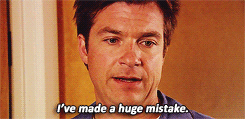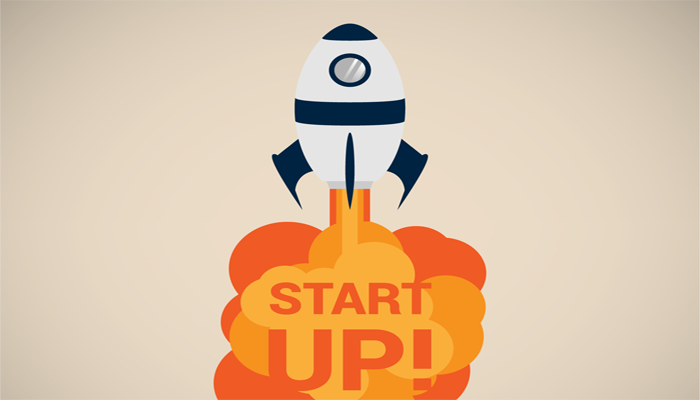For the next 12 weeks I’m going to be creating a set of blog entries for a series of videos I’ll be watching as part of “How to Start a Startup” which is a program hosted by CoLabJax and put on by TheBunkerJax.
If you want to watch the video to follow along, check it out here on YouTube: Building Product, Talking to Users, and Growing presented by Adora Cheung (Homejoy)

There are a ton of really good, but very hard to digest bits of information in Adora’s talk. For the most part it’s telling the story of her startup HomeJoy, but interspersed in the narrative she goes into a little bit of detail about the mistakes she and her partners made while starting their business. This is a very rare, and incredibly powerful opportunity we have to look into the good and the bad decisions that went into a successful business. So often we see the founders of startups talking about all of the great things they did to launch their company to the moon, but we rarely get to hear about the stumbles, pitfalls, and downright stupid things they did that almost sunk them. Personally, I feel like this is an awesome opportunity to dissect these mistakes a little bit, so I’m going to pick out my favorites and go into those.
We spent a year doing something we weren’t passionate about
This is something I touched on briefly in my last post, but it’s something we should be repeating ad nauseam. If you’re picking a product or an idea because you think it’s a million dollar idea, you’re doing it for the wrong reasons. You should be doing it because you’re sick and tired of being without it. This should be the idea that makes you mad that it doesn’t exist yet (or isn’t in wide use). You need to feel emotional about it, because if you the creator aren’t feeling that emotion, chances are neither will your customers. Thinking back to my first real startup, orderbolt (More details in a future post), my partner and I were sitting in a bar eager to get our Friday night going, but we had been waiting a good twenty minutes, and hadn’t seen our server at all. While we’d been waiting other groups had come into the bar, sat down, and then left for some place with better service. Now, you might be thinking that this is just a failure of a particular waitress, and you would be right, but it’s also a systemic problem in the service industry. Your service is only as good as the employees you hire, but why can’t we mitigate this a bit with some technology? We were sitting there in 2011 with smartphones more powerful than the ones that took astronauts to the moon, but we were still living within a service paradigm that has been around since the beginning of time.
As you can see from that tangent, I had a ton of passion for my idea… I still do. Every single time I have to wait for a check, or go find my waitress I fume inside that I can’t start and finish the transaction from my phone. I tell you all this because it’s crazy important. Your passion is what’s going to infect other people, and get them on board with your idea. It’s also likely the only thing that will keep you going strong with things get tough. Try to be your number 1 best customer.
You should be able to explain your idea in one sentence

I love this one, because if you listen to Adora’s elevator pitch, it’s actually not that terrible. It could use some polish, but it’s mostly in line with what many entrepreneurship thought leaders push as a good elevator pitch. But one thing you need to keep in mind is that not everyone is willing to give you thirty seconds, and thirty seconds in an elevator doesn’t really translate as well to print media, ads, blog posts, or the front page of your website.
There has been research by Akamai.com that says for an ecommerce website, you really only have about 4 seconds to grab your customer’s attention with something before you risk losing them to the next google search result. To that end, it’s important to be able to boil your idea, and your reason for existence down to a very quick, concise statement.
Be willing to beg

This isn’t something Adora highlighted as a mistake, but it was a great illustrative point that she made. You need to be willing to beg for your first few customers. Not many people want to be the first to use something, especially if they have to pay for it. There’s a lot of intrinsic risk to being the first, and risk is something that we as humans usually avoid at all costs. Her story of going out during the festival and guilt tripping people to sign up for home cleanings with frozen bottles of water is both genius, and the exact kind of thing you should be willing to do if you want to start a successful company. For the right customers, you should be willing to do whatever it takes to get the valuable golden nuggets of feedback that they could give you. So go out and do it!
Don’t over automate

This is a really subtle, and maybe counter intuitive to most people. I know I tend to get into this trap when I’m designing a solution, because I want to avoid rework at all costs, and scrapping code is painful to my pride as well as my pocket book. I tend to automate everything I can, but to Adora’s point, if you’re over automated you’re missing out on that human interaction that can not only be very positive for consumers, but it can expose things that are less than ideal in the user experience. If your business is completely automated, you’re probably missing out on really valuable feedback and analysis that could be happening. Another point she makes on this topic is that if you’re spending a lot of time automating systems, you’re less agile and more married to your systems, and you wont be willing to scrap things when you need to. It’s important to be able to change gears really quickly and adapt to what you’re learning from customers before it sinks you, if you’re heavily invested in code and automation for a given feature, you’re way less likely to nuke it if the time comes. Don’t worry about the edge cases when you’re small, focus on who you have not who you might get.
“S is for Stealth, and Stupid”

Even though this gets a slide in her presentation, she doesn’t really go into much detail why you shouldn’t be stealth as a startup. I have seen this in every startup related class, networking event, meetup, and function; I come up to someone and introduce myself, and ask what someone is working on: “Oh man, it’s really great, but we’re keeping it under wraps right now because it’s so awesome”. Oh… okay… bye then.

Never develop things in a vacuum! Unless of course you’re working on impulse engines, and then you should really hurry up already. If you aren’t talking to customers, investors, curious people, users, developers, etc you’re missing out on an incredible amount of feedback and data you could be using to improve your idea. Worse, and more harmful is that you’re developing a product that exclusively fits your view of the world. News-flash, you’ve probably got it wrong in a few places. You might get lucky and you’re more right than wrong, but why the hell would you take the risk? The more you speak about your idea and the more feedback you get the more you can mitigate the risk that you’re building something no one cares about.
Fear of being beat to market is real. It does happen. The problem with that logic though, is that if anyone can bring the idea to market, it doesn’t really matter if you came first, or second, or third, you’re going to be dealing with competitors, and if you don’t have some sort of advantage over them, you’re screwed anyways so you might as well bow out now. First to market doesn’t necessarily win anymore, in fact, it rarely does.
For you engineers with a bit of intellectual property law knowledge, you can talk about your idea without revealing trade secrets, or technical designs that would compromise your ‘public display’ timing for filing your patent applications, so stop worrying about that.
Remember that every person that you can talk to about your company can be a potential Customer, Resource, Employee, Investor. So always be selling, and don’t be afraid to let the cat out of the bag.
Lets talk about growth

This is a pretty dense section, and there’s a lot of math and graphing involved. For those of you who haven’t taken a stats class for a while I’ll try and paraphrase what she was going for here.
So we have a few different kinds of growth that we will see as a business owner
The fact of the matter is that you’ll be relying on all of these at some point in your businesses’s life-cycle, there’s no way around it. Sticky growth is when your customers love you so much that they stay around, and buy more. Viral growth is when your customers love you so much that they tell all their friends, and they tell their friends, and BAM we have a growth chart that looks like a hockey stick. And paid growth is what is required to move from just getting early adopters to getting the more mature customers that are out there. Hopefully you’re getting a ton of the first two to get started, but you’ll always need to be working on paid growth so that you have these skills when they become more and more important as your company matures.
The first thing to understand is that all businesses lose customers. You’ll never have 100% retention, unless you’re a mortuary, so don’t get discouraged when people stop using your product. If you think about your business as an hourglass and the grains of sand are your customers, as long as you’re pouring more sand than is coming out of the bottom you’re going to be set. The goal here is to focus on making the bottom hole as small as you can, and get getting the incoming flow as fast as you can.
The second thing to understand is that every customer comes with a cost. Not only do you have your cost of providing what you’re selling (Servers, coders, bandwidth), but you have your cost to actually get the customer (Advertising, sales, marketing, onboarding, etc). The goal here is to make sure that not only are you breaking even with your product costs, but also your customer acquisition costs. You can have 100 million users, but if they are only paying you $1 each, and it costs you $2 to provide the product, you’re screwed. It’s important to find the most cost efficient methods to create, deliver, and sell your product without sacrificing important components of customer experience.
I really recommend Traction by Gabriel Weinberg. It’s a great book about how to build your users in a way that maximizes your startup’s key performance indicators.
That’s the post for this week, please feel free to reach out to me on LinkedIn, Twitter, or in person


















You must be logged in to post a comment.